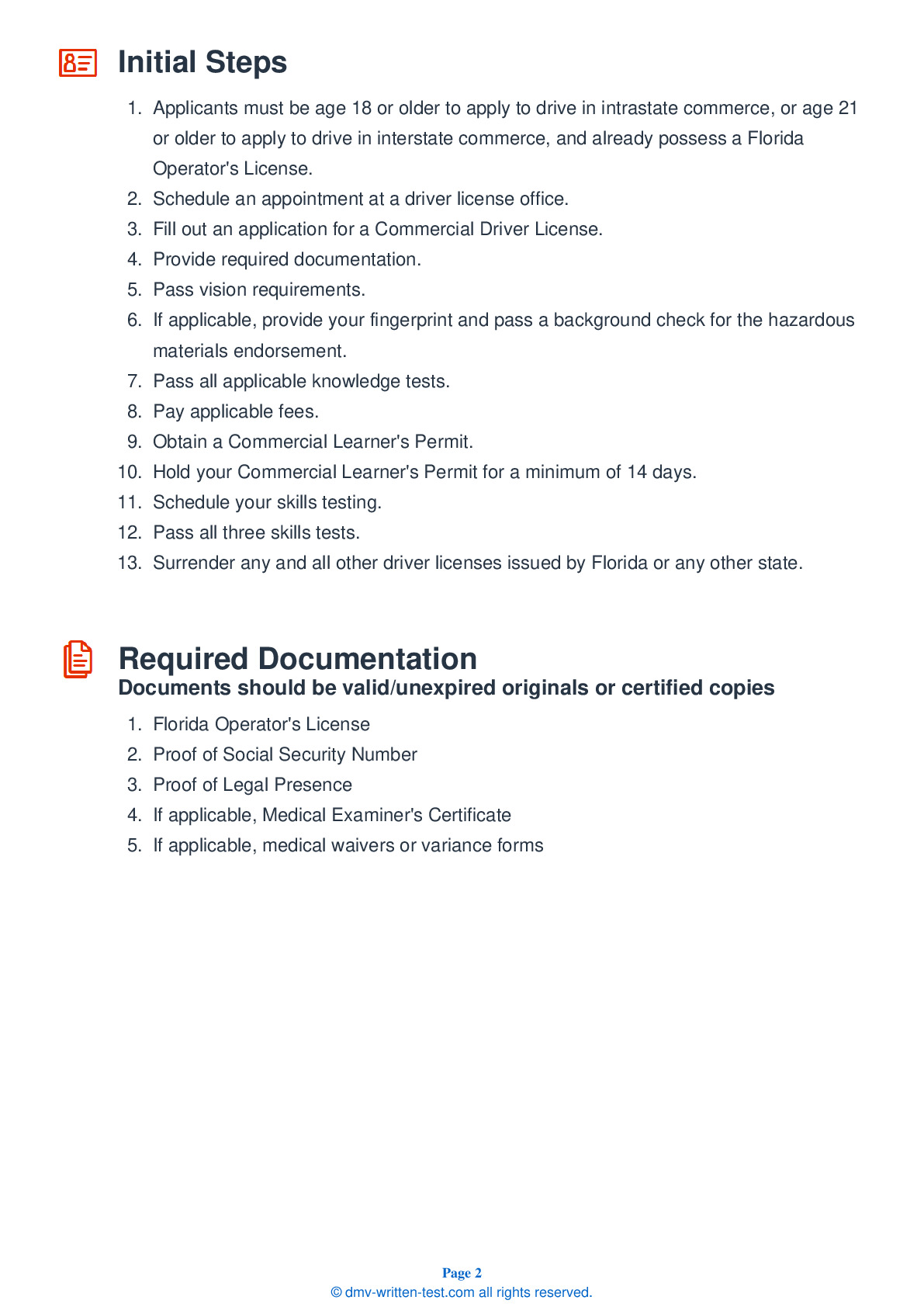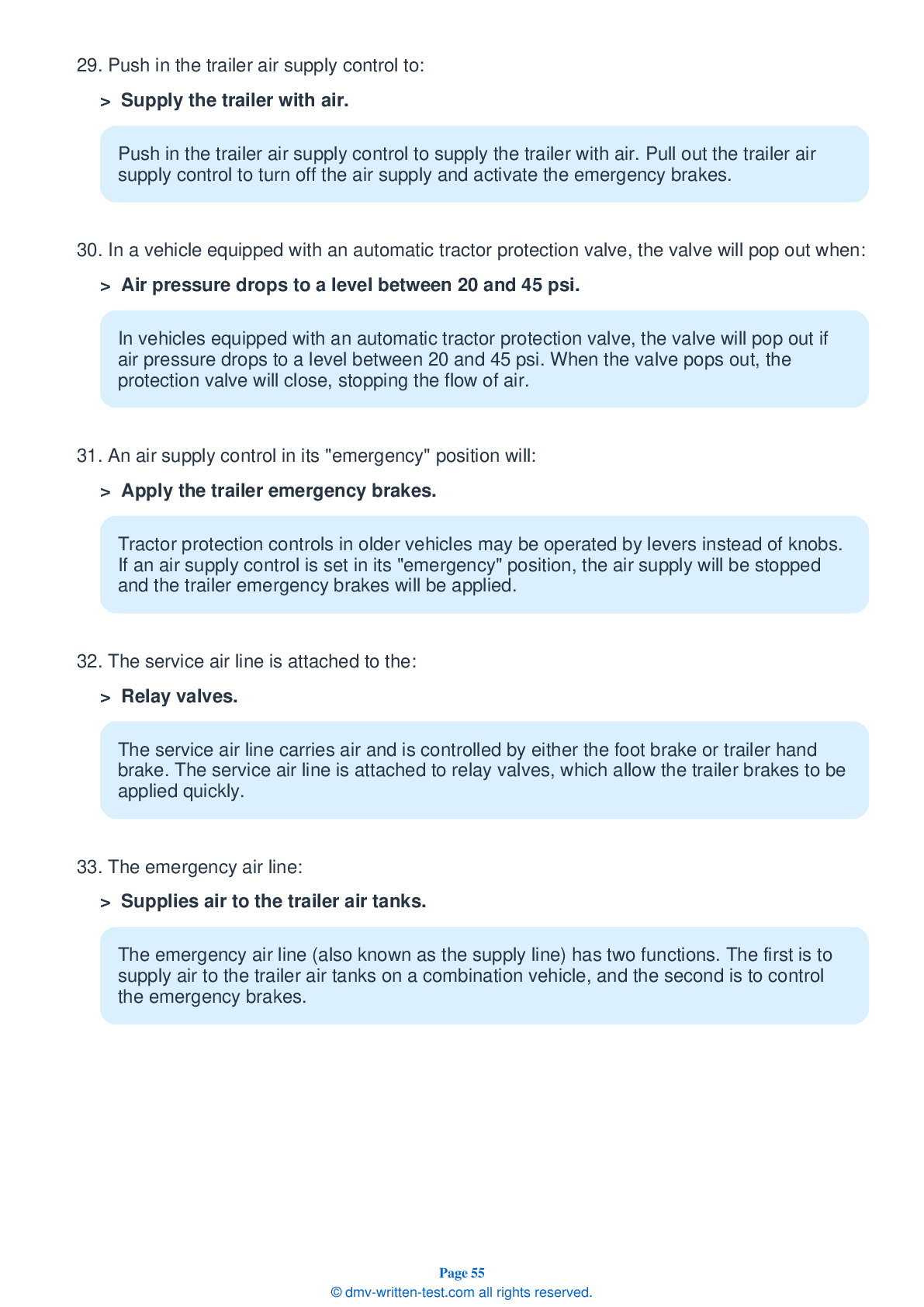Combination
All applicants who are applying for a Class A CDL should be prepared to take the Combination test. This test covers information found in Section 6 of the Commercial Driver License Manual. Section 6 provides the information needed to safely operate tractor-trailers, doubles, triples, and straight trucks with trailers. The test is made up of 20 multiple-choice questions, and applicants will have one hour to correctly answer a minimum of 16 questions. The Combination test is not a replacement for the Double/Triple endorsement test.
Number of Question
Passing Score
1. If oil and water build up in your vehicle's air tanks, the brakes:
Explanation
Air tanks should be drained daily to remove water and oil buildup. An excess of oil and water in the air tanks can interfere with proper brake function.
2. Failure to keep the fifth wheel plate properly greased could:
Explanation
Failure to keep the fifth wheel plate properly lubricated can create friction between the tractor and trailer, causing steering problems.
3. Pull out the trailer air supply control to test:
Explanation
Be sure to test the trailer emergency brakes before beginning a trip. After ensuring that the trailer rolls freely, you can test the emergency brakes by pulling out the trailer air supply control, or placing it in the "emergency" position. Pull forward slightly with the tractor and make sure the trailer does not move.
4. Rollovers are most likely to happen when:
Explanation
Rollovers happen when an operator turns too fast. Drivers should be sure to slow down before entering turns and curves, especially when transporting a fully-loaded rig.
5. A loss of air pressure in the emergency line will cause:
Explanation
The emergency air line controls the emergency brakes on a combination vehicle. A loss of air pressure in the emergency line will cause the emergency trailer brakes to activate.
6. Before a drive, ensure that air flows to all trailers by:
Explanation
Before a trip, ensure that air in the air brake system reaches all trailers. Do this by waiting for air pressure to build, then sending air to both the emergency and service lines and opening the shut-off valves on the rear of the last trailer. If air escapes from the shut-off valves in the rear of the combination, the air is being supplied to the entire vehicle.
7. Starting in which year were newly manufactured trailers required to have ABS?
Explanation




